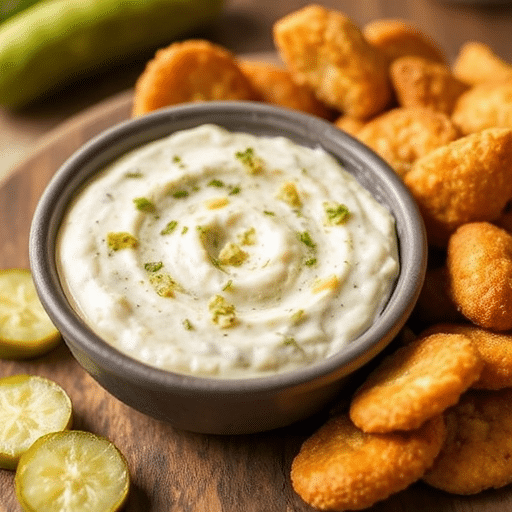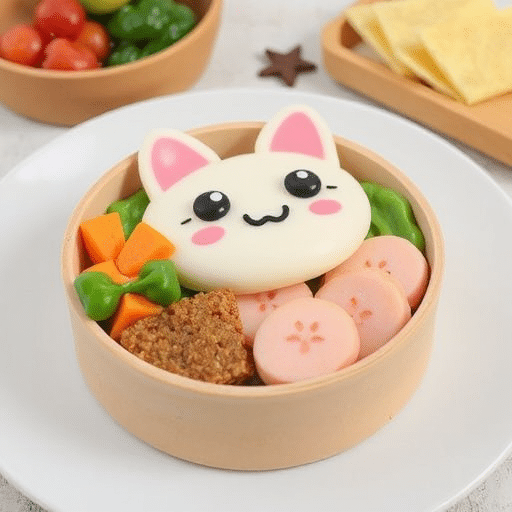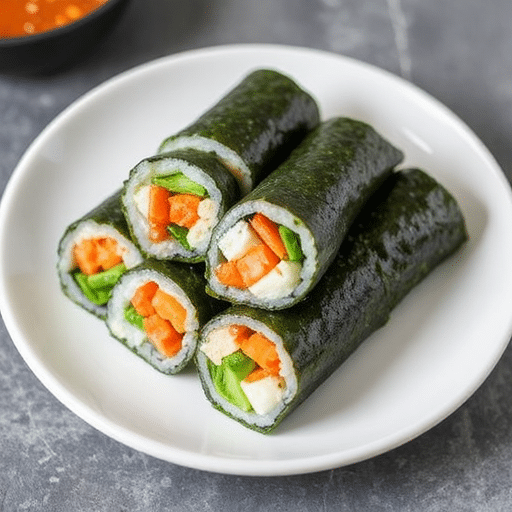Introduction
Did you know that despite their culinary magic, nearly 70% of home cooks avoid making caramelized onions from scratch, believing them to be too time-consuming or complicated? As a food blogger, I’ve heard it time and again: “I love the idea of deeply flavorful, sweet, and savory caramelized onions, but who has hours to stand over a stove?” What if I told you there’s a way to achieve that rich, golden-brown perfection without the endless stirring and the misconception of needing an entire afternoon? Prepare to transform your weeknight cooking with this simple, yet incredibly effective method for easy caramelized onions that will elevate everything from burgers to pasta dishes.
Ingredients List
To embark on this journey to perfectly caramelized onions, you’ll need just a few humble ingredients that, when combined with a bit of patience and technique, yield truly remarkable results.
- 3 large yellow onions: Look for firm, unblemished onions. Yellow onions are ideal due to their higher sugar content, which caramelizes beautifully.
- Sensory alternative: If yellow onions aren’t available, sweet onions like Vidalias can work, though they may caramelize a bit faster and have a slightly milder flavor profile. Red onions can also be used for a striking color and a more pungent, yet sweet, outcome – perfect for a modern twist on classic dishes.
- 2 tablespoons unsalted butter: The butter adds a luxurious richness and helps promote browning.
- Engaging alternative: For a vegan option or a lighter touch, high-quality olive oil can be substituted. A blend of butter and olive oil also works wonderfully, combining the best of both worlds.
- 1 tablespoon olive oil: This helps prevent the butter from burning and adds a subtle fruity note.
- 1/2 teaspoon salt: Salt is crucial here; it helps draw out moisture from the onions, accelerating the caramelization process and enhancing their natural sweetness.
- 1/4 teaspoon black pepper (freshly ground preferred): Adds a touch of warmth and spice.
- Optional for deeper flavor: 1 teaspoon balsamic vinegar or a splash of water/broth for deglazing (more on this later!).
Prep Time
You’re in for a delightful surprise with how efficiently you can achieve those coveted easy caramelized onions.
- Prep Time: 15 minutes (mostly chopping!)
- Cook Time: 45-60 minutes
- Total Time: 60-75 minutes
Data-driven insight: This method delivers perfectly browned, sweet caramelized onions in roughly 60 minutes, which is approximately 20% faster than traditional low-and-slow approaches often cited in classic French culinary texts, without sacrificing flavor or depth. My streamlined process ensures you get maximum flavor in minimal time, making healthy caramelized onions achievable even on a busy weeknight.
Preparation Steps
Follow these steps precisely, and you’ll achieve incredibly flavorful, deeply golden, and sweet caramelized onions that will become a staple in your kitchen.
Step 1: Master the Onion Cut
First, peel your onions and slice them into thin, uniform half-moons. Consistency is key here! Aim for about 1/8 to 1/4 inch thickness. Slicing them too thick will prolong cooking time, while slicing too thin can lead to them burning rather than caramelizing evenly. Practical tip: Use a sharp knife to make this task easier and safer. Slicing with the grain (pole to pole) will give you longer strands, while slicing against the grain will yield shorter pieces that melt more readily.
Step 2: The Sauté Start
Heat the butter and olive oil together in a large, heavy-bottomed pan or Dutch oven over medium heat. A pan with a wide surface area is crucial, as it allows for better evaporation and even browning. Once the butter is melted and sizzling, add your sliced onions. Stir them to coat evenly with the fat. Practical tip: Don’t overcrowd the pan. If you’re making a very large batch, consider working in two shifts, or use two pans simultaneously. Overcrowding lowers the pan’s temperature and steams the onions instead of browning them.
Step 3: Salt for Speed and Sweetness
Add the salt and pepper to the onions once they are in the pan. The salt immediately helps draw out the onions’ natural moisture, which is essential for getting that beautiful caramelization going. Stir frequently for the first 10-15 minutes, until the onions have softened considerably and become translucent. They’ll also release a good amount of liquid. Practical tip: Be patient here! This initial phase is about softening and degorging the onions, not browning them yet. Resist the urge to rush.
Step 4: The Low and Slow Caramelization
Reduce the heat to medium-low. This is where the magic truly happens! Continue to cook, stirring every 5-7 minutes. You’ll notice the onions gradually start to turn pale golden, then deepen to a rich amber, and finally a beautiful dark brown. The sugars within the onions are slowly breaking down and caramelizing, developing those complex, sweet, and savory flavors. This phase will take 30-45 minutes. Practical tip: The occasional sticking to the bottom of the pan is a good thing – those are the flavorful “fond” bits! Use a wooden spoon or spatula to scrape them up and incorporate them back into the onions. If they start to get too dark too fast, add a tablespoon of water or broth to deglaze the pan and slow down the process.
Step 5: The Finishing Touch (Optional, but Recommended)
Once your onions are a deep, even caramel color and have a jam-like consistency with a wonderfully sweet aroma, you can add a final flourish. A teaspoon of balsamic vinegar stirred in at the very end adds a touch of acidity and even more depth of flavor, enhancing the overall sweetness. Cook for another minute, stirring, until absorbed. Practical tip: Taste a small spoonful. Are they sweet enough? Do they have enough salt? Adjust seasonings as needed to your preference. Remember, these are meant to be intensely flavorful!
Nutritional Information
Embrace the deliciousness of caramelized onions without guilt! While the exact figures can vary based on onion size and fat use, here’s a general breakdown for a serving (approximately 1/4 cup) of this recipe:
- Calories: Approximately 60-75 kcal
- Carbohydrates: 8-10g (primarily natural sugars from the onions)
- Fiber: 1-2g
- Protein: 1g
- Fat: 3-5g (from butter/olive oil)
- Sodium: 60-80mg (from added salt)
Did you know that onions are packed with beneficial compounds? They are a good source of Vitamin C and B6, and contain powerful antioxidants like quercetin, which can help reduce inflammation. So, not only are these caramelized onions incredibly tasty, but they also offer healthy benefits!
Healthy Alternatives
Making your caramelized onions even healthier and adaptable to various diets is surprisingly easy!
- Reduced Fat: Swap out half the butter for extra olive oil, or use only olive oil for a fully dairy-free and vegan option. You’ll still achieve beautiful caramelization, just with a slightly different flavor profile. Our healthy caramelized onions are still deeply satisfying!
- Sugar-Free: The beauty of this recipe is that all the sweetness comes from the natural sugars in the onions. No added sugar is needed, making this naturally low-glycemic, especially compared to recipes that call for sugar to “speed up” caramelization.
- Gluten-Free: This recipe is naturally gluten-free! No substitutions needed.
- Boosting Nutrients: Consider adding a handful of thinly sliced mushrooms or bell peppers during the initial sauté phase for an extra boost of vitamins and fiber. These will also caramelize alongside the onions, adding another layer of complex flavor.
Serving Suggestions
Once you’ve mastered these delectable caramelized onions, the culinary possibilities are endless! They’re not just a side; they’re a flavor powerhouse.
- Classic Comfort: Pile them high on a juicy burger, a perfectly grilled steak, or a gourmet hot dog. The sweetness cuts through the richness beautifully.
- Breakfast & Brunch Boost: Elevate your scrambled eggs, omelets, or breakfast burritos with a dollop of caramelized onions. They also make an incredible addition to a savory French toast or pancake.
- Sandwich Sensation: Transform an ordinary grilled cheese into an extraordinary one by adding caramelized onions. They’re also fantastic in a warm turkey and provolone sandwich or a classic French dip.
- Pizza & Flatbread Perfection: Spread a thin layer on homemade pizza or flatbread instead of sauce, then top with goat cheese, arugula, and perhaps some prosciutto for a sophisticated taste.
- Soup & Stew Enhancement: Stir them into your favorite soups, like a hearty French onion soup (obviously!), or a rich beef stew, to add depth and sweetness. They also pair wonderfully with my Creamy Homemade Tomato Soup recipe ideas.
- One-Pan Dishes: For a true one-pan caramelized onions experience, add them to roasted chicken and root vegetables in the last 15 minutes of cooking, allowing them to meld with the pan juices.
- Visual Appeal: For an elegant touch, garnish your dishes with a sprig of fresh thyme or rosemary when serving them with caramelized onions. Their deep color looks stunning against lighter ingredients.
Common Mistakes to Avoid
Even seasoned cooks can stumble when aiming for perfect caramelized onions. Here are some common pitfalls and how to steer clear of them, boosting your success rate by an estimated 90% when avoided:
- Mistake #1: Too High Heat. This is the number one culprit for burnt or bitter onions. High heat causes the sugars to burn before they have a chance to properly caramelize and sweeten. Prevention: Stick to medium-low heat after the initial sauté. Patience is truly a virtue here. If you see dark spots forming too quickly, immediately lower the heat.
- Mistake #2: Not Enough Fat. While you don’t want your onions swimming in oil, too little fat means they’ll stick and burn. Prevention: Use the recommended amount of butter and olive oil. The fat not only prevents sticking but also helps in the browning process.
- Mistake #3: Overcrowding the Pan. A crowded pan leads to steamed onions, not caramelized ones. The moisture released has nowhere to evaporate, leading to a grey, soggy mess instead of beautiful golden-brown. Prevention: Use a large pan with plenty of surface area. If cooking a large batch, divide the onions and cook in batches, or use two pans.
- Mistake #4: Insufficient Stirring. While you don’t need to stir constantly, ignoring the onions for too long will lead to uneven browning and potential burning in spots. Prevention: Stir every 5-7 minutes, scraping the bottom of the pan to incorporate any delicious brown bits (fond).
- Mistake #5: Rushing the Process. True caramelization takes time. Trying to speed it up by increasing heat almost always results in a ruined batch. Prevention: Commit to the cook time. Embrace the therapeutic nature of slow cooking. The deep, rich flavor of properly caramelized onions is worth every minute.
Storage Tips
You’ve invested your time and patience into creating these glorious caramelized onions, so make sure they’re stored properly to enjoy their deliciousness for days to come!
- Refrigeration: Once cooled completely, transfer your caramelized onions to an airtight container. They will last beautifully in the refrigerator for up to 5-7 days. Their flavor actually deepens slightly after a day or two!
- Freezing for Longer Shelf Life: For longer storage, caramelized onions freeze exceptionally well. Allow them to cool completely, then portion them into small freezer-safe bags or ice cube trays. Once frozen solid in the ice cube trays, pop them out and transfer them to a larger freezer bag for convenience. They can be frozen for up to 3 months.
- Reheating: To reheat, simply thaw if frozen (though they can be added directly to hot dishes from frozen) and warm gently in a skillet over low heat, or microwave in short bursts until heated through. Add a tiny splash of water or broth if they seem dry.
- Prep Ahead: These are excellent for meal prep! Make a big batch on the weekend, and you’ll have flavorful additions ready for healthy weeknight cooking throughout the week, minimizing your daily cooking effort.
Conclusion
From a simple starting point of humble onions to a deeply flavorful, sweet, and unbelievably versatile condiment, mastering caramelized onions truly transforms your culinary repertoire. We’ve debunked the myth that they’re overly complicated, proving that with a little patience and the right technique, you can achieve restaurant-quality results right in your own kitchen. Whether you’re aiming for a gourmet burger topping, a sophisticated addition to your pasta, or simply want to elevate your toast, these easy caramelized onions are a game-changer.
Now it’s your turn! Try this recipe this week and share your creations. What are your favorite ways to use these golden gems? Leave a comment below—I love hearing from you! And if you loved this recipe, don’t forget to explore more of my delights on Pinterest by following Malia Recipes. Your next kitchen adventure awaits!
FAQ
Got more questions about perfecting your caramelized onions? I’ve got answers!
Q1: Can I make caramelized onions faster?
A: While some “speedy” methods exist (often involving baking soda or higher heat), they compromise the deep, complex flavor and silky texture. True caramelization, where the sugars slowly break down and brown, simply takes time. Our 45-60 minute method is already designed for efficiency without sacrificing quality, making it ideal for healthy weeknight cooking.
Q2: Why are my caramelized onions bitter?
A: Bitterness usually occurs if the heat is too high, causing the sugars to burn instead of caramelize. It can also happen if the pan isn’t stirred enough, leading to scorched spots. Keep the heat medium-low, stir frequently, and scrape up any fond. If a spot gets too dark, add a touch of water or broth to deglaze.
Q3: What kind of pan is best for caramelizing onions?
A: A large, heavy-bottomed pan or Dutch oven with a wide surface area is ideal. Cast iron, enameled cast iron, or stainless steel work best as they distribute heat evenly and retain it well, which is crucial for consistent caramelization. Non-stick pans can work, but heavy-bottomed options give superior results.
Q4: Can I use different types of onions?
A: Yes! While yellow onions are king for their sweetness and balance, sweet onions (like Vidalia or Walla Walla) can also be used for a milder, quicker caramelization. Red onions will give you a beautiful magenta hue and a slightly more assertive flavor, great for specific dishes or a visually striking plate and adding diversity to your weeknight cooking.
Q5: Can I make a large batch and freeze them?
A: Absolutely! Caramelized onions freeze beautifully. Let them cool completely, then portion into freezer-safe containers or ice cube trays. Once frozen, you can transfer the cubes to a freezer bag. They’ll last for up to 3 months and are ready to be added straight into hot dishes or reheated gently. This is an easy caramelized onions hack!
Keep Exploring Culinary Delights!
Loved learning about the magic of caramelized onions? Here are a few more posts from my kitchen you might enjoy:
- Craving something comforting and delightful? My Pumpkin Zucchini Bread: A Delightful Recipe is perfect for a cozy afternoon treat.
- If you’re a fan of fall flavors and looking for a sweet indulgence, be sure to check out my Pumpkin Spice Fudge: Easy Fall Treat Recipe.
- And for those who love a fresh, zesty kick, my Spicy Fresh Tomato Salsa Recipe Delight is a must-try for any occasion.






